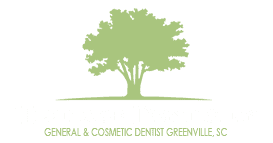What Does a Dental Hygienist Do?
Everyone who goes to routine dentist visits comes into contact with a dental hygienist. They are in fact the first person that one usually sees during the course of a typical visit, as the dental hygienist is the person in charge of cleaning and polishing the patient’s teeth before they see the dentist. Undertaking different duties and responsibilities than both dentists and dental assistants, dental hygienists carry out a number of essential roles in the dental office, working closely with patients one-on-one and making a real difference in the oral health of the patients they see.
Duties and Responsibilities
The primary duties of a dental hygienist revolve around the cleaning and polishing of a patient’s teeth. For this reason, a patient who has a regular dentist’s visit is usually seen first by the dental hygienist. The dental hygienist is also responsible for taking X-ray images of a patient’s teeth and preparing those images for review by the dentist. After taking X-rays (which does not occur at every visit), the dental hygienist will use special tools to clean built-up plaque and tartar off of the teeth. They will also inspect the teeth and gums for any potential areas of concern to report to the dentist, for her or him to investigate further during their exam. Finally, the dental hygienist will polish the teeth and, if necessary, provide information to the patient that may be needed regarding improved brushing and flossing practices.
Additional duties that may occasionally be required to be performed less frequently by a dental hygienist include taking out stitches, administering local anesthetic, and molding and shaping various alloys to be used in the filling of cavities, for example. They are often the first person to examine a patient’s file, as well, taking note of issues that the dentist is keeping an eye on and being sure to relay this information before the dentist begins her or his examination.
Education and Preparation
Dental hygienists are licensed at both the state and the national level, which means that they are highly qualified to carry out the duties and procedures that they are responsible for. Those seeking to enter the profession must take qualifying exams such as the National Board Dental Hygiene Examination after successfully completing an accredited dental hygiene program. Many dental hygienists have earned bachelor’s or even master’s degrees in accredited dental hygiene programs before taking the National Board exam. At the bare minimum they must have earned an Associate Degree before attempting qualifying exams.
Following the National Board exam, aspiring dental hygienists must also take a reginal qualifying exam, which typically consists of both written and practical exams. The practical exams include both hypothetical case studies and real patients upon whose teeth the dental hygienist must perform certain tasks to demonstrate proficiency. This means that regardless of where you live and where your dental hygienist has trained, they have passed qualifying exams at both the state and national level that make them fully qualified to do they work that they do.
